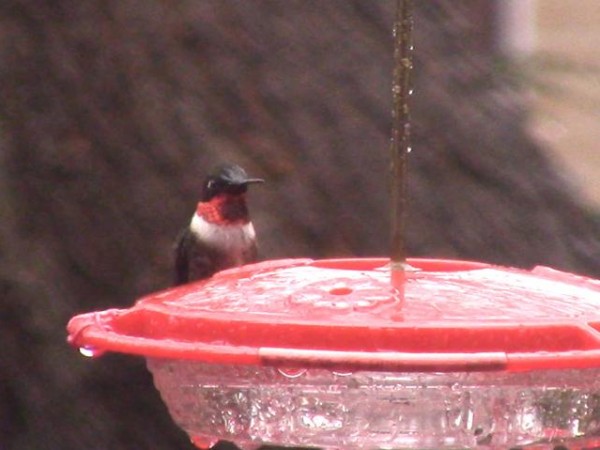

Score one diagnostic point for Allen's! The width of the adult-type r5 was measured as 1.17 mm. Stiles gives the range of this feather for immature male Rufous Hummingbirds as 2.7-3.6 mm and for immature male Allen's Hummingbird as 1.7-2.6 mm. The width of the white-tipped immature r5 was measured as 1.81 mm. Over the years since 1972, his hummingbird ID criteria have proven to be extremely useful and accurate, and nobody has been able to improve upon them.īoth outer rectrices (designated r5 in the three photos below - click on the photos for a larger view) were very narrow and pointy. Stiles is probably best known for co-authoring A Guide to the Birds of Costa Rica with Alexander Skutch in 1989. The reference that hummingbird banders use to identify Rufous and Allen's Hummingbirds was written by F. I set about taking the necessary measurements, most of which involved the tail feathers (the scientific lingo for these feathers is rectrices, or the singular rectrix). The incomplete gorget and this one tail feather indicated that he was a hatch-year (immature) bird, while the adult male-type tail feathers clearly indicated he was male.Īt this point, I was sure he was an Allen's Hummingbird, a species that had never been recorded in Ohio before! But, I had to prove it in order to be accepted into the ornithological record the details of this bird would have to be thoroughly documented and accepted after review by the Ohio Bird Records Committee (a more thorough report than is provided here will be sent for their consideration). The hummingbirds visiting feeders in the fall are probably migrants, not residents, and will help, not hinder, their migration.His tail did not look at all like what I was expecting for a Rufous Hummingbird, but was instead comprised of 8 tail feathers, of which 7 were very pointy and 1 that was very narrow with a white tip. For those who wonder if leaving their hummingbird feeders up late into the fall might delay the birds’ departure, fear not. Research has shown that the average amount of weight gained by hummingbirds prior to migration is sufficient to fuel a 500-mile flight – a necessity if they choose to cross the Gulf of Mexico. According to Cornell’s The Birds of North America Online, a ruby-throated hummingbird’s body weight can double in just seven to ten days.

Some ornithologists feel that this is not coincidental and that the flowering of jewelweed may even influence the timing of ruby-throated hummingbird migration.Īs early as July, ruby-throated hummingbirds start accumulating fat. The overland migration of these birds occurs at the peak of flowering of spotted jewelweed, or touch-me-not, whose nectar ruby-throats are fond of. It is widely known that ruby-throated hummingbirds consume nectar and insects. The number of ruby-throated hummingbirds migrating south in the fall may be as much as twice the number that return in the spring, as it includes all the immature birds that hatched out this past summer. Some males leave as early as July, but most hummingbirds depart towards the end of August and beginning of September. Adult females are the next to head south, followed shortly by juveniles. As those who feed ruby-throated hummingbirds into the fall have probably noticed, males are the first to leave New England. Enough birds have been sighted for us to know that, as a whole, ruby-throats fly quite low during migration – just above the trees when over land, and skimming the waves over water. Many fly across the Gulf of Mexico in order to do so, but many also follow the coast line. Due to the lack of appropriate food, these birds must find a warmer climate during the colder months. It is now known that the ruby-throated hummingbird is the only hummingbird that nests in eastern North America, and winters, for the most part, along the western Gulf coast south through Central America. Thanks to the practice of placing individually-numbered bands on the legs of birds and setting up nets in which to catch them, a great deal has been learned about what really goes on during the migration of ruby-throated hummingbirds as well as other species. One held that these tiny birds hitched a ride on the backs of other, larger birds. There were many theories regarding the phenomenon of ruby-throated hummingbirds crossing the Gulf of Mexico in order to winter in Central America.

Impossible? For many years ornithologists assumed so. You are a bird weighing between 1/10th and 1/8th of an ounce (that’s 2 ½ paper clips) and you can fly up to 3,500 miles, 500 of which may be nonstop, under your own power.


 0 kommentar(er)
0 kommentar(er)
